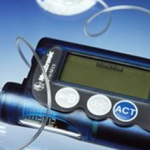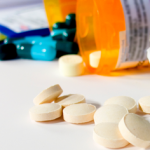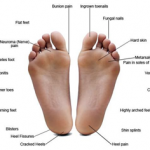Type 1 Diabetes Treatment
Type 1 Diabetes Treatment
Type 1 diabetes is not as serious as type 2 diabetes, but is still a condition which follows patients throughout the rest of their lives. As such, its treatment is important if patients wish to prevent symptoms from becoming worse over time. Since it is essentially a less extreme form of adult-onset diabetes, the treatment of type 1 diabetes is very similar to that of type 2. Treatment involves the regulation of insulin and blood sugar levels, a nutritious diet, and a consistent regimen of physical exercise.
Insulin Regulation
Patients with type 1 diabetes must regulate their insulin levels. This can be done through a number of means. The two most common are shots and pumps. Insulin shots can be performed whenever needed, though it is standard for patients to take long-lasting insulin shots on a regular basis. These shots are often administered twice a day, though fast-acting insulin shots can also be taken prior to large meals so as to help increase metabolism when it is most needed. Depending on the physical state of the individual diabetic, doctors may recommend any one of these methods, or even a combination of them.
Pumps work a bit differently, through the use of a catheter that delivers insulin directly into the body. Pumps are programmable, so insulin can be regulated on a meal-by-meal basis. In addition, pumps deliver insulin at what is known as a basal rate. In layman’s terms, a steady stream of insulin is delivered at a consistent rate, mimicking actual pancreatic function. Currently, research is being conducted to find a way of giving diabetics more freedom by designing insulin pumps to monitor blood sugar levels so that diabetics can get the insulin they need without having to program their pumps at all.
Blood Sugar Regulation
No matter how diabetics go about receiving their insulin, it is important for them to know how much they need at all times. This data can be acquired through the use of glucometers. As the name implies, these are meters that measure the content of glucose in the bloodstream. Monitoring of blood sugar is important for diabetics because their blood glucose is not metabolized in the same manner as most people’s. There are now glucometers that, much like insulin pumps, remain on the patient’s person at all times. While these are still being fine-tuned, their long-term implications are that diabetics may one day not have to worry as much about checking blood sugar quite so often.
Nutritious Diet
The consumption of excess carbohydrates and saturated fats can be problematic for those who suffer from type 1 diabetes. Saturated fats can raise cholesterol, which subsequently raises the patient’s risk of developing heart conditions. Excess carbohydrates, when not properly metabolized due to low insulin levels, join the body’s stores of fat and cause obesity. Since obesity is one of the leading causes of diabetes, it follows that weight gain is counterproductive to treatment of the disease. By eating nutrient-rich produce and whole grains that are relatively low in carbohydrates, as well as sources of protein that are low in saturated fats but high in essential fatty acids (such as fish and nuts), diabetics can help to mitigate these symptoms. This is one of the most effective aids in the treatment of type 1 diabetes.Physical Exercise
Cardio and aerobics are the best forms of exercise for type 1 diabetics. This is because they are instrumental in promoting healthy cardiovascular functions, which helps to keep blood pressure down by promoting healthy blood flow. This can lower the risk of heart conditions that sometimes arise from diabetes. Exercising as little as half an hour a day can have significant long-term benefits. There is no harm in doing more than this, but diabetics should take caution not to do more than they are capable of handling. Too much exercise can lead to lactic acidosis, a condition which may lead to kidney damage (a concern already facing many diabetics). Excess activity can also lower blood glucose levels beyond their target range, meaning that it is important to continue monitoring blood sugar and insulin levels when engaging in any form of physical exercise.
























